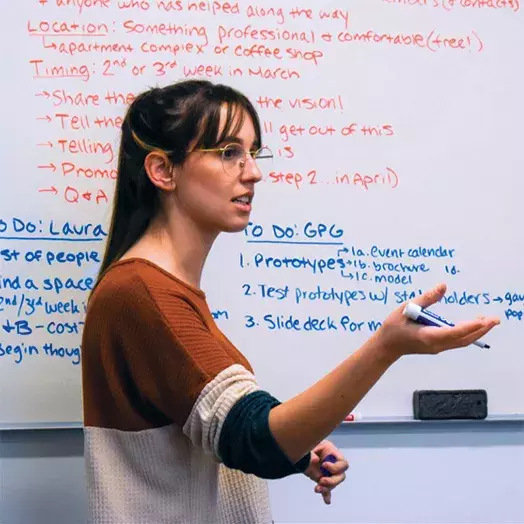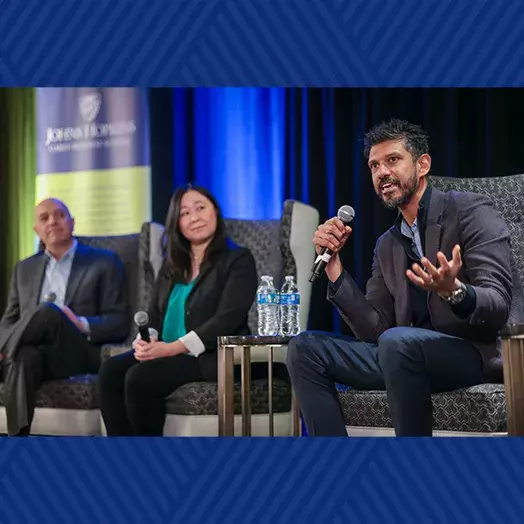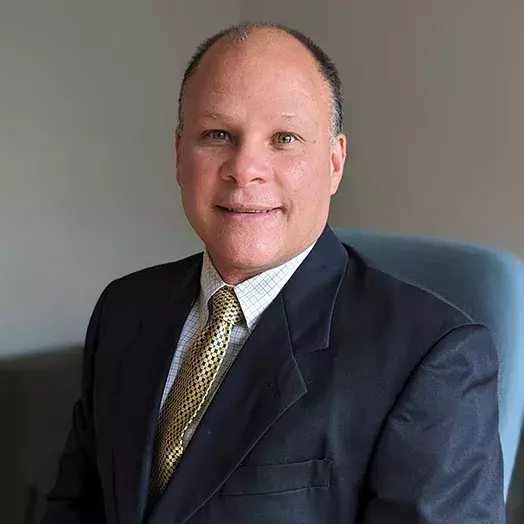Design thinking has become a crucial skill for many of today’s professionals. For one Carey alum, her career emphasizes the need to design solutions by prioritizing the user experience above all else.

Why a career in art can be a valuable asset in today's business world
When you think of a career in art, you might not necessarily jump to design thinking; you may think of art therapy, digital design, or being an art teacher. But a career in art can go deeper, holding much value in today’s business world.
Jennifer Greenstein’s art and business education is part of an approach to problem-solving in today’s world. As a senior service designer at JPMorgan Chase & Co., the 2021 Design Leadership MA/MBA graduate says her work is human-centered.
Human-centered design is a way to include human perspective into the approaches of problem solving for commonly used tools—products, services, or systems. Perception of the tool, ease of use, and efficiency are a few of the many frameworks that go into solving with design thinking.
Many of us don’t necessarily consider the amount of time and effort that’s spent on creating new systems for us to enjoy our everyday tools. Something as simple as contactless transactions comes with hours of design thinking to make sure the experience is seamless and easy for the user.
Creating better experiences
Sitting on the wealth management team, Greenstein dissects current systems, creates service blueprints, and designs service strategies and solutions for users.
Greenstein spends much of her time brainstorming for a better user experience, and problem-solving in creative ways to bring people together. As a designer, she tackles the challenges herself. She collaborates with her team to identify and understand the needs and motivations of the user to create new, innovative solutions.
And while she is now the subject matter expert in her position, Greenstein started her career in event and hospitality management, wanting to bring unique and memorable experiences to companies renting out the Universal Orlando Resort theme park.
After a few years managing events at Universal and later serving as creative consultant for the Nestle Skin Health Innovation Center, she began taking on creative projects and realized the creative side was where she wanted to grow.
Her searches for creative MBA programs brought her to the Design Leadership MA/MBA program offered by the Maryland Institute College of Art and Johns Hopkins Carey Business School. It gave Greenstein exposure to all types of design and creative critical thinking, letting her strengthen skills she had and build new ones.
“You gain the foundations from the coursework and add that to the real-world experience. I now apply the knowledge I gained from the business courses, like financial language, to my current position. Although it’s in a different context, I understand the language and can communicate with stakeholders better because of it,” she said.
She says everything she learned helped her grow and find new ways to solve challenges.
“All the different pieces put together are now my toolkit of rules I follow. For example, the negotiation tactics tied into how we sell designs to our stakeholders. It was great exposure,” she said.
Challenging the term ‘networking’
Networking is a huge part of the business world. And for many, it’s a way to explore new opportunities to push your career goals to the next level. But Greenstein has much more to add to the term.
“It’s more than just making business connections to help find a job. I think networking is actually mentorship, since you gain personal connections with colleagues and professors that you can call and say, ‘I’m struggling with this issue at work, can you help me brainstorm how to fix this?’” she said.
Greenstein says that mentors can help you learn new skills, advance your current skillset, and push you to be confident enough to find that new job yourself. Plus, it’s powerful to hear a mentor’s experiences as an industry expert.
“The best mentors are the ones you feel you don’t have to take something from. You're working together and building off each other’s ideas in a way that fosters your future and their mentoring abilities. It's quality over quantity for me,” Greenstein said.
Despite her success, she says she still turns to her mentors from the MA/MBA program today. Their mentorship is another kind of business value, another kind of art, and a priceless tool for building her career.
To learn more about the Design Leadership MA/MBA program, visit the program webpage.


